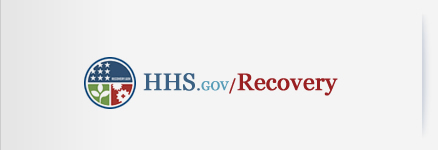Indian Health Service (IHS) Recovery Act Projects by Category
Indian Health Services OverviewThe Indian Health Service (IHS) makes comprehensive health care services available to nearly 2 million American Indians and Alaska Natives (AI/AN) who are members of 565 federally recognized Tribes. Direct health care services are administered through a nation-wide system of 12 Area offices and 163 IHS and tribally managed service units. Overall, over 50% of the IHS budget authority appropriation is administered by Tribes, primarily through Self-Determination contracts or Self-Governance compacts. Please see the Indian Health Service’s Fact Sheets for more information on specific health care topics concerning American Indian and Alaska Natives. The information contained in this website provides an overview as well as detailed descriptions of issues that concern all aspects of the Native American Community. The Fact Sheets provide an overview, as well as detailed descriptions of issues that concern all aspects of the Native American Community. Crucial Health Care Issues for American Indians and Alaska NativesAI/ANs born today have a life expectancy that is 5.2 years less than all races in the U.S. population (72.6 years to 77.8 years, respectively). AI/ANs die at higher rates than other Americans from: - Tuberculosis (500% higher),
- Alcoholism (514% higher),
- Diabetes (177% higher),
- Unintentional injuries ( 140% higher),
- Homicide (92% higher), and
- Suicide (82% higher).
Recovery Act Funding Through the Indian Health ServiceThe Recovery Act includes five IHS project areas: - $227 million for health facilities construction,
- $100 million for maintenance and improvements,
- $85 million for health information technology,
- $68 million for sanitation facilities construction, and
- $20 million for health equipment that will help improve health care in Indian Country.
Health Care Facilities Construction- $227 million in ARRA construction funds will be used to replace two IHS hospitals with state-of-the-art facilities . Completion of the new IHS Eagle Butte Health Center in Eagle Butte, South Dakota , and the Norton Sound Regional Hospital in Nome, Alaska, will increase access to modern health care services for neighboring communities.
- The Eagle Butte Health Center will serve approximately 9,300 American Indians residing in the Cheyenne River Service Unit in South Dakota. The new facility will replace the existing hospital to meet the needs of the service population.
- The Norton Sound facility will replace a 61-year-old hospital that is stretched to serve an estimated 10,000 users . The project will create a substantial number of new jobs in construction, transportation, and other professions, and will help fight unemployment in Nome, estimated in January 2009 to be 12.7 percent.
- Indian Health Service - Health Care Facilities Construction (PDF - 210 KB) Implementation Plan
Maintenance and Improvement Projects- $100 million is allocated to improve existing Indian health care facilities. Many IHS and tribal health care buildings require structural renovations, additional space, and design updates to accommodate modern health care practices.
- Specific infrastructure improvements include improving facilities, upgrading buildings to modern safety standards, and enhancing energy conservation.
- The Recovery Act will fund over 300 maintenance and improvement projects.
- Indian Health Service - Facilities Maintenance and Improvement (PDF - 213 KB) Implementation Plan
Health Information Technology- $85 million of Recovery Act funding will be used to modernize and extend electronic health information technology (IT) used by IHS, tribal, and urban Indian health programs to improve health care quality, reduce medical errors, and modernize administrative functions.
- Twenty percent of the funds will be used to buy new hardware and upgrade network services. Additional software and related services will be procured through appropriate contract vehicles for use at IHS, tribal, and urban Indian health programs.
- Network infrastructure improvements will protect patient data, increase access to services, improve network quality, and allow provision of telehealth services.
- Indian Health Service - Health Information Technology (PDF - 225 KB) Implementation Plan
Sanitation Facilities Construction- $158 million in Recovery Act funds (IHS received $90 million in Recovery Act funds from the U.S. Environmental Protection Agency) will be used to construct essential sanitation facilities (including water, sewage, and solid waste disposal) to Indian homes and communities . Funds will be distributed based on need and prioritized to serve existing homes.
- At the end of fiscal year 2008, about 220,000 Indian homes did not have sanitation facilities . Safe drinking water and adequate waste disposal facilities are essential preconditions for most health promotion and disease prevention efforts, as well as being a major quality of life factor . Families with adequate sanitation facilities require fewer medical services.
- The sanitation facilities funds will be used to complete 290 sanitation facilities projects constructed in 29 states.
- It is estimated that approximately 16,000 homes will be served through these projects . The local economy will be stimulated through an influx of funding from these projects, particularly in construction related jobs.
- Indian Health Service - Sanitation (PDF - 222 KB) Implementation Plan
Essential Medical Equipment- $20 million of Recovery Act funds will be used to purchase critical medical equipment and ambulances . In some facilities, existing equipment is outdated and overused, particularly at high-volume facilities . Medical equipment is vital to providing diagnostic and emergency medical care.
- Over 260 pieces of much-needed medical equipment will be purchased, including 38 ambulances and 9 Computed Tomography (CT) scanners.
- Other equipment to be purchased includes cardiac monitoring equipment, equipment for integration of electronic patient records, blood chemistry analyzers, dental equipment, emergency defibrillators, and X-ray systems, among other items. The equipment will be acquired for IHS and tribal health care facilities in 24 states.
- Indian Health Service - Equipment (PDF - 225 KB) Implementation Plan
|







